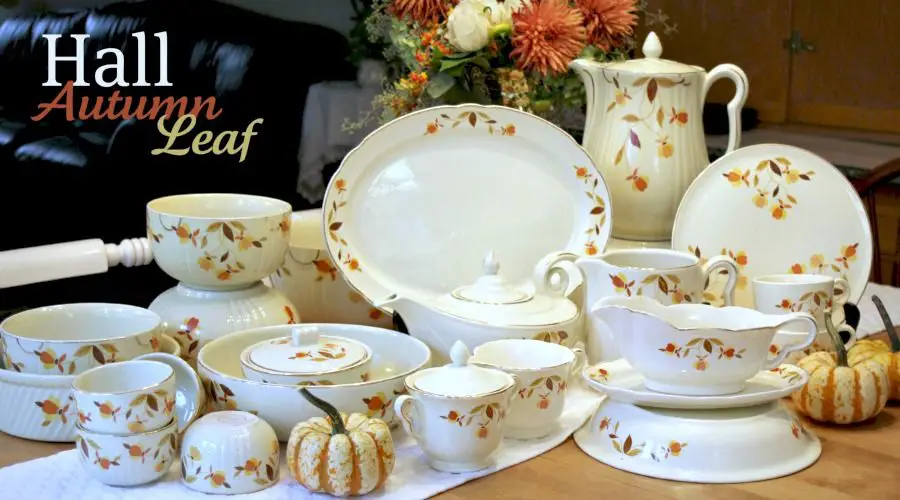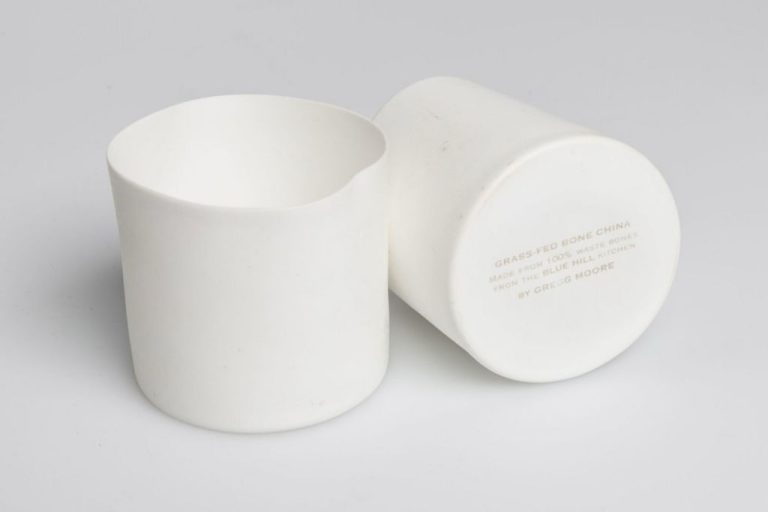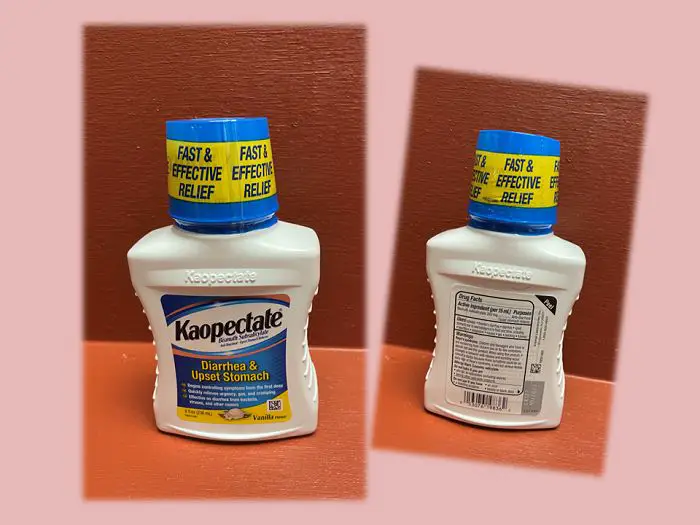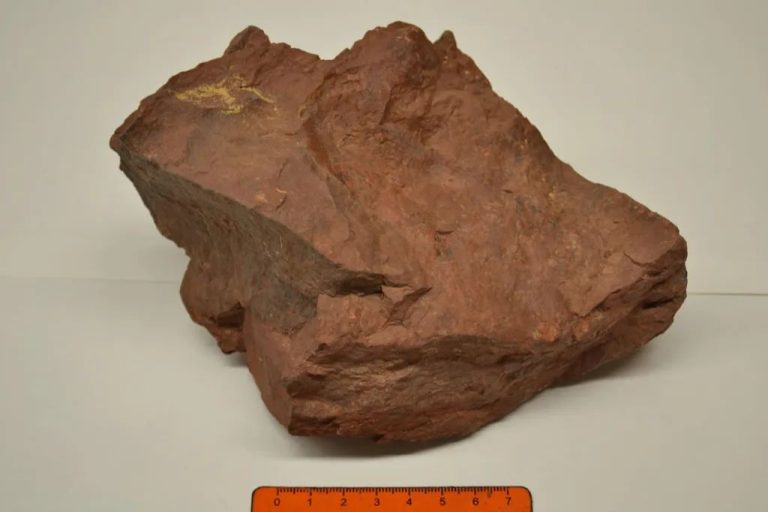Is Hall China Collectible?
Hall China was an American pottery company known for its innovative, high-quality dinnerware and art pottery. Founded in East Liverpool, Ohio in 1903, Hall China operated for over 100 years before closing its doors in 2006. The company was an important producer of 20th-century ceramics. Many of Hall China’s dinnerware patterns, art pottery, and novelty items are now highly sought after by collectors.
Hall China was established by Robert Hall, who was part of a family with a long tradition in the pottery industry of East Liverpool. The Hall China company notably survived major disasters like the Great Depression and competition from European imports. It became well known for its innovative production techniques and stylish patterns. Core dinnerware lines included Autumn Leaf, Kings Crown, and Patrician. Hall China also produced art pottery and specialty items like cookie jars. Its ceramics were known for their high quality glazes, hand-painted designs, and attention to detail.
History of Hall China
Hall China was founded on August 14, 1903, by Robert Hall, in the former West, Hardwick and George Pottery facility, following the dissolution of the two-year East Liverpool Potteries Company. Hall built off of the existing site and infrastructure to establish the new company.
Located in East Liverpool, Ohio, the original factory was situated along the Ohio River, which allowed the company to receive raw materials and transport finished products easily by riverboat. Founded at the turn of the century, Hall China emerged as a prominent American pottery manufacturer known for high quality ceramics.
According to The Hall China Company – Wikipedia, Robert Hall had a “desire to produce higher-grade ceramics using production methods rather than individual craftsmanship.” This drive helped establish Hall China as a leader in innovative manufacturing and endurance of the American ceramics industry.
Hall China’s Popularity
Hall China became popular due to its mass-produced, affordable prices. Founded in 1903, the company embraced assembly line production methods to efficiently manufacture its dinnerware and teapots (https://www.zippia.com/hall-china-careers-1165445/history/). This allowed Hall China to produce items at a low cost, making them affordable and accessible to average households. By the 1930s, Hall China was producing millions of pieces per year and distributing them widely across the United States (https://www.themuseumofceramics.com/hall2). The company’s dinnerware lines like Autumn Leaf and Wild Rose remain popular collectibles today due to their nostalgic designs and ubiquity in many American homes over the decades.
Types of Hall China

Hall China produced many popular lines of dinnerware over the decades. Some of the most collectible Hall China lines include:
Autumn Leaf – First introduced in 1915, the Autumn Leaf pattern features brown and orange leaves against a white background. It remains one of Hall China’s most iconic and valuable patterns.
Blue Ridge – Launched in 1933, Blue Ridge combines blue geometric shapes and a tan ring pattern. It is a classic mid-century modern look.
Old Colonial – Dating back to 1914, Old Colonial has intricate detailing with a blue and grey floral motif. It epitomizes fine china from the early 20th century.
Snow Village – First produced in 1958, Snow Village features charming winter village scenes. It remains popular for holiday gatherings.
Other well-known Hall China lines include Morning Glory, Spring Garden, American Beauty, Century Shape, and Tomorrow’s Classic. Hall China produced over 40,000 patterns, with new lines debuting each year.
Collectibility Factors
There are several key factors that determine the collectibility and value of Hall China pieces:
Rarity – Rare or limited production Hall China pieces tend to be more valuable to collectors. Limited edition items and anything made for a short time period have more collectibility.
According to this Artsy article, collectors should look for unique pieces and works made in limited quantities.
Condition – The condition of a Hall China piece greatly impacts its value. Items in pristine, mint condition with no chips, cracks, repairs, or other damage are most desirable.
As noted by The Pottery Wheel, condition is a major factor affecting ceramic value. Flaws and damage significantly reduce collectibility.
Desirability – Certain patterns, colors, shapes, and designs are more sought-after by Hall China collectors. Pieces that are in high demand or aesthetically pleasing tend to command higher prices.
Most Valuable Hall China
Some of the most valuable and sought-after Hall China pieces feature rare designs and limited edition patterns. For example, the Autumn Leaf pattern produced in the early 1900s can sell for over $1,000 due to its intricate hand-painted details. Limited edition castings like the Hen-on-Nest series are also highly collectible, with mint condition pieces fetching prices upwards of $500 at auction.
Unusual shapes and novelties like character mugs tend to command higher prices as well. Some of the priciest Hall China pieces include teapots and dishes in the elusive Wisteria pattern, which can sell for $2,000 or more. Knowing the typical retail price for common Hall China can help collectors spot undervalued gems at flea markets and antique shops.
How to Identify Hall China
Hall China can be identified by looking for specific backstamps, logos, and other markings that were used throughout the company’s history. According to Dating – Hall China Marks, Hall China primarily used four main backstamp designs:
- The first backstamp from 1903-1930s features an image of George Hall along with “Hall China” printed.
- From 1915-1957, the backstamp contains an image of the Hall China building in East Liverpool, Ohio.
- Starting in 1921, another backstamp shows an eagle symbol with “Hall” printed above it.
- From 1957 onward, the backstamp displays “Hallcraft” in a shield shape.
In addition to backstamps, collectors should look for impressed marks that contain the pattern name and shape number. Pieces may also have ink stamps, paper labels, or gold decorating marks. Studying the variations in markings helps date Hall China pieces and identify rare patterns.
Caring for Hall China
Hall China, like other antique porcelain and pottery, requires special care and handling to keep it in good condition. Proper cleaning, storage, and repairs are key to preserving its value.
For cleaning, it’s best to hand wash Hall China with warm water and a small amount of gentle dish soap, according to Martha Stewart [1]. Avoid harsh abrasives or cleaners that can scratch the glaze. Take care when handling to prevent chips and cracks. Dry thoroughly with a soft cloth.
When storing Hall China, wrap pieces individually in acid-free tissue paper and place inside archival boxes to prevent dust buildup and rubbing between pieces, according to the British Antique Dealers Association [2]. Maintain a stable temperature and humidity. Avoid direct sunlight which can fade colors.
For any repairs needed, consult a professional porcelain restorer. Re-gluing broken pieces or touch-up painting should only be done by experts in order to preserve the antique value of Hall China.
Selling and Appraising
If you have pieces of rare or desirable Hall China that you are interested in selling, there are a few options to consider:
Auctions – Major auction houses like Christie’s and Sotheby’s occasionally feature Hall China in their sales. You can contact an auction house directly to inquire about consigning pieces.
Online Auctions – Sites like eBay and LiveAuctioneers allow you to auction Hall China to a global bidding audience. This exposes your items to more potential buyers.
Dealers – There are specialty vintage and antique china dealers that may be interested in purchasing your Hall China pieces outright. The Hall China Traders group on Facebook can help connect you to knowledgeable dealers.
Appraisals – Before selling, it’s a good idea to get a professional appraisal done on your Hall China. This provides a third-party valuation that can verify the rarity and value of your pieces. The International Society of Appraisers (ISA) has a directory to search for accredited appraisers.
Conclusion
Hall China has a rich history as one of America’s foremost china manufacturers from the early 1900s through the 1970s. While not all Hall China pieces are valuable collectibles, certain patterns, complete sets, and rare items can fetch high prices among enthusiasts and antique collectors.
Key factors that determine the collectibility and value of Hall China include age, pattern, condition, completeness of sets, and rarity. The company produced many popular patterns like Autumn Leaf, Nantucket, and Wild Rose that remain sought-after today.
With proper identification, care, and appraisal, Hall China can be a worthwhile investment for collectors. This overview summarizes why Hall China maintains appeal and demand decades after its production.





